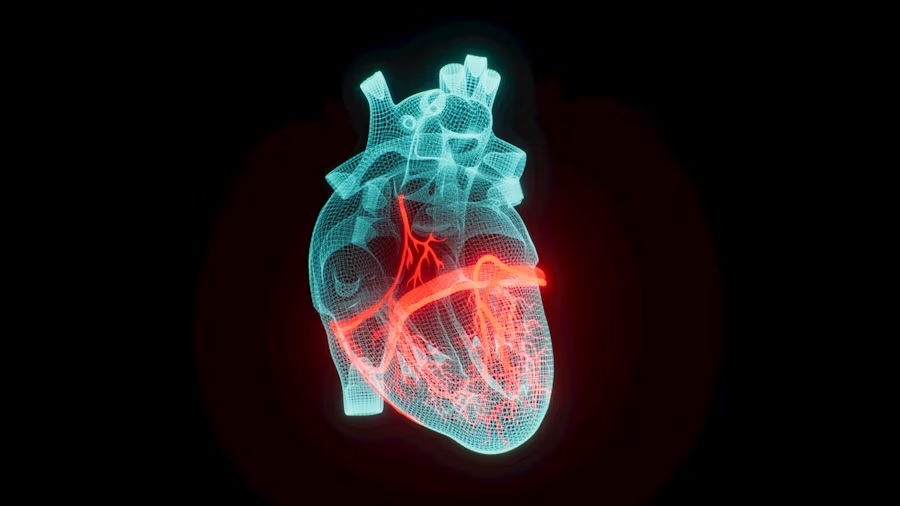Maintaining a healthy heart rhythm is crucial for general well-being. When the heart’s natural system malfunctions, it can result in irregular beats that may go unnoticed or significantly impact daily life. In such cases, pacemakers offer a reliable solution, restoring rhythm and preventing dangerous health outcomes. These small medical devices are tailored to individual needs, ensuring the heart beats consistently and efficiently.
With advancements in technology, Dr. Jose Jacob notes how pacemakers have become more effective, smaller, and easier to manage than ever before. Understanding how these devices function, when they are necessary, and what life looks like after implantation can help individuals make informed decisions with their healthcare providers.
Recognizing Irregular Heart Rhythms
The heart typically beats in a steady, organized rhythm that helps pump blood efficiently throughout the body. When that rhythm changes unexpectedly—beating too slowly, too quickly, or with pauses—it can affect how well the heart performs its job. These changes are often referred to as arrhythmias and can go unnoticed or cause noticeable symptoms. Certain medications, excessive caffeine, or thyroid imbalances can also disrupt the heartbeat.
Many people with irregular heartbeats may feel lightheaded, unusually tired, or short of breath during daily activities. Others might notice a fluttering sensation in the chest or feel as though their heart is skipping beats. These signs might be brief or persistent, depending on the cause. In some cases, these symptoms only appear during physical exertion or emotional stress, making them harder to detect.
Conditions like aging, damage from heart disease, or problems with the heart’s electrical signals can all lead to rhythm disturbances. Some individuals experience symptoms only during stress or illness, while others may notice them while resting. Recognizing these patterns early can help guide appropriate care. Early detection allows for timely interventions that help prevent complications like stroke or heart failure.
How Pacemakers Support the Heart
A pacemaker is designed to help regulate the heartbeat when the heart’s natural rhythm becomes too slow or erratic. It sends gentle electrical pulses to prompt the heart to beat at a more regular pace. These devices are especially useful for people whose hearts fail to maintain a steady rhythm on their own, a condition that can lead to fatigue, fainting, or even more serious complications.
Each pacemaker includes a pulse generator and one or more insulated wires, called leads, that deliver electrical signals to precise areas of the heart. In some modern designs, the leads are no longer necessary, offering a more compact, less invasive option. People diagnosed with conditions like bradycardia or heart block often benefit immensely from these devices, as the pacemaker helps restore a dependable rhythm. Over time, this can improve a person’s stamina and reduce hospital visits.
Determining the Need for a Pacemaker
Not everyone with an irregular heartbeat will require a pacemaker. Healthcare providers rely on a combination of tests, such as electrocardiograms and Holter monitors, to assess how the heart is functioning. These tools help detect patterns that may not appear during a routine checkup, offering a clearer picture of whether the heart is pausing or beating too slowly. In certain cases, doctors may use an implantable loop recorder for longer-term rhythm tracking.
Deciding to implant a pacemaker often involves evaluating the individual’s symptoms, overall health, and how much the rhythm disorder is affecting daily life. Someone who frequently feels dizzy, faints without warning, or tires easily might be a candidate. In certain cases, people recovering from heart surgery or those with underlying electrical issues in the heart’s conduction system may also benefit. The decision is usually made collaboratively between the patient and cardiologist, weighing the risks and benefits carefully.
Undergoing the Procedure
Getting a pacemaker typically involves a minimally invasive procedure performed under local anesthesia. The device is usually implanted just under the skin near the collarbone, with wires threaded through veins into the heart. Most patients are able to return home the same day or the next, depending on their overall condition. The entire process often takes just a couple of hours and is considered low-risk in most cases.
Initial recovery tends to be straightforward, though some soreness or swelling around the incision site is normal. Over time, the body adjusts to the device, and many people barely notice it’s there. It’s important to follow medical guidance during the healing period, especially when it comes to arm movement and avoiding pressure on the site. Patients are often advised to avoid lifting heavy objects with the affected arm for several weeks.
Doctors monitor the pacemaker’s function closely after placement, making sure it’s calibrated correctly and responding to the heart’s needs. Regular checkups and occasional adjustments help ensure the device continues to work efficiently. Some clinics now use remote monitoring systems, allowing quicker responses to any changes in heart rhythm or device performance.
Living with a Pacemaker
Daily life with a pacemaker can remain active and fulfilling. Most individuals return to their usual routines, including walking, traveling, and even moderate exercise, once cleared by their healthcare provider. It’s common to feel more energetic and experience fewer symptoms than before the implant. Many resume hobbies and social activities they had previously avoided due to fatigue or dizziness.
There are a few precautions to keep in mind, such as avoiding strong magnetic fields or certain security devices that could interfere with the pacemaker. However, these adjustments rarely disrupt daily life. With routine monitoring and periodic battery checks, the device can support heart health for many years.
Developments in Pacemaker Technology
Pacemakers have progressed remarkably over the last decade. Newer models now offer features like wireless communication with monitoring systems, allowing doctors to track heart activity remotely. This reduces the need for frequent in-person visits and provides early warnings if the device or heart rhythm needs attention. Some models even send automatic alerts to healthcare providers when irregularities are detected.
Leadless pacemakers, which are implanted directly into the heart without traditional wires, are gaining popularity due to their reduced risk of infection and simpler surgical process. Research is also ongoing to develop rechargeable models and devices with even longer battery life. These innovations continue to shape the future of cardiac care, offering more comfort and reliability to those who depend on these life-sustaining devices.






